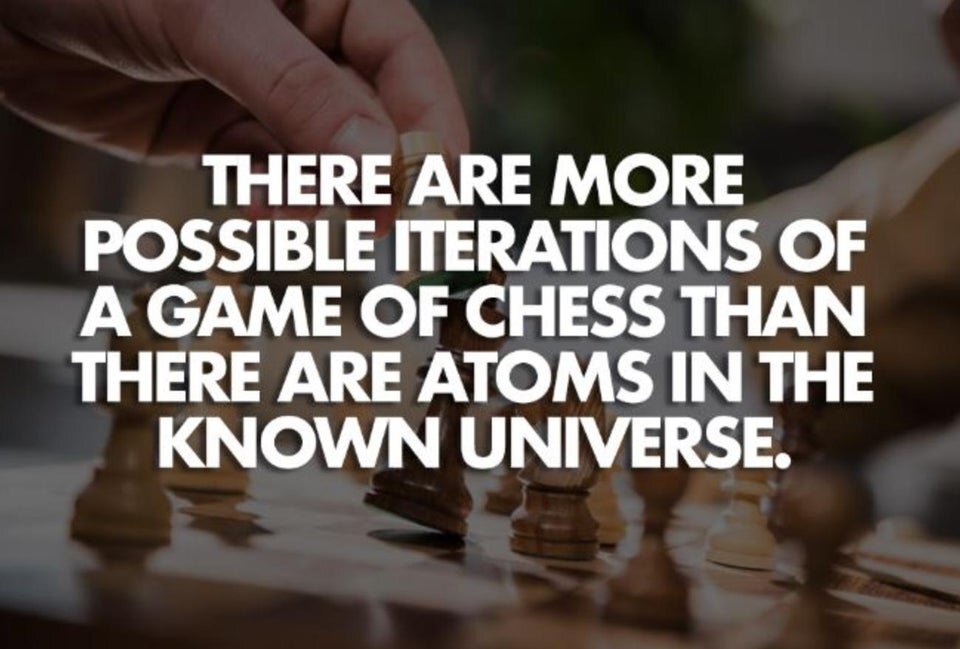What? Iterations of a game of chess!!
Did you know that there are more possible iterations of a game of chess than there are atoms in the known universe?
Chess is a popular board game that has been played for over a
thousand years. The game is played on a checkered board with 64 squares, and each
player starts with 16 pieces, including pawns, knights, bishops, rooks, a
queen, and a king. The goal of the game is to checkmate the opponent's king,
which means putting it under attack in a way that it cannot escape capture.
What makes chess so interesting is the sheer number of possible
moves and outcomes. On average, there are 20 possible moves for each player on
each turn, which means that there are 400 possible moves by the second turn of
the game. By the third turn, there are over 72,000 possible positions, and by
the fourth turn, there are over 9 million possible positions.
As the game progresses, the number of possible positions increases
exponentially. By the time both players have made just 40 moves, there are over
10^120 possible positions, which is more than the number of atoms in the known
universe.
To put this in perspective, the number of atoms in the known
universe is estimated to be around 10^80. This means that even if every atom in
the universe was a computer capable of playing chess at a rate of one move per
microsecond, it would take longer than the age of the universe to exhaust all
possible positions.
The vastness of the game's possibilities has led to a rich culture
of analysis, strategy, and innovation. Chess grandmasters spend years studying
and perfecting their craft, analyzing games and coming up with new tactics and
strategies to gain an advantage over their opponents.
So, the next time you play a game of chess, remember that you're
engaging in an activity that has more possibilities than the known universe
itself!





评论
发表评论